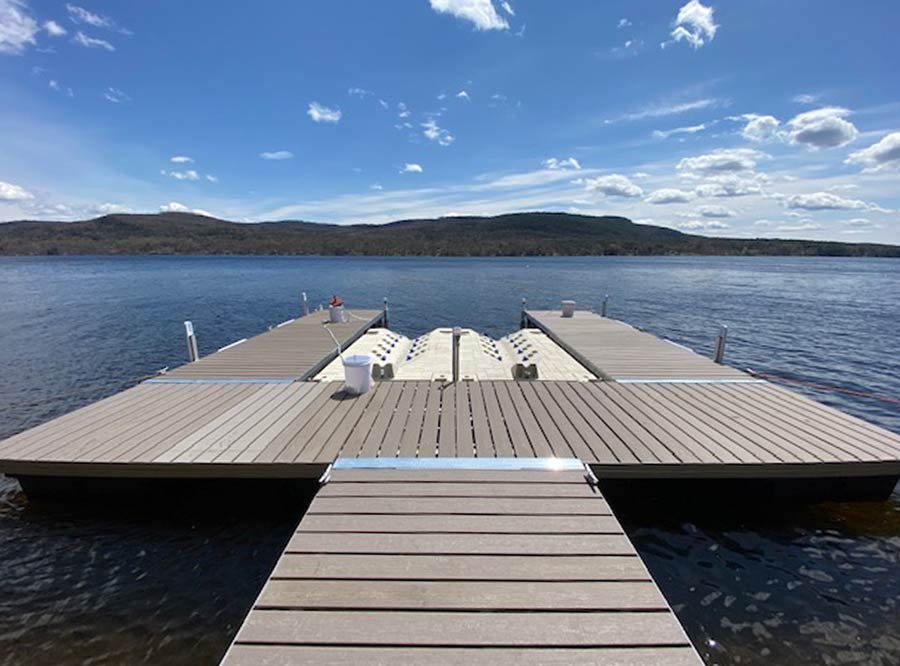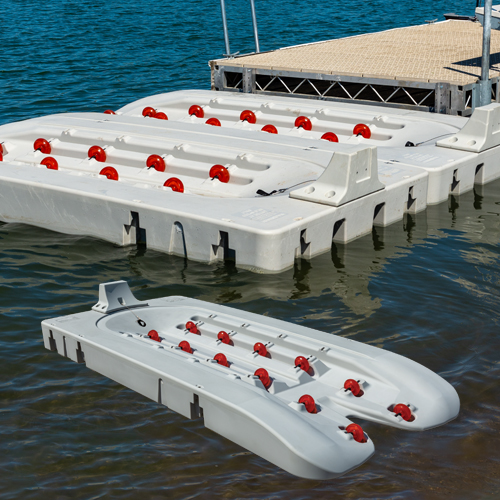Maximizing Your Outdoor Space with Specialized Floating Dock Services
Wiki Article
Upgrade Your Waterside With Durable Floating Docks
Updating your waterside with long lasting floating docks can substantially enhance both capability and visual appeals, giving a functional service for various water tasks. These frameworks are made to adjust to fluctuating water levels, making sure security and accessibility throughout the seasons. With an array of materials available, including low-maintenance alternatives and conventional timber, choosing the ideal dock can match your personal design and meet functional needs. Nonetheless, understanding the subtleties of installation and maintenance is crucial for making sure longevity and performance. What variables should you consider when making this financial investment?Benefits of Floating Docks
Floating docks deal a wide variety of advantages that enhance their allure for different maritime applications. Unlike traditional set docks, floating docks surge and autumn with the tide, making certain constant ease of access for watercrafts and watercraft no matter of environmental conditions.
Furthermore, floating docks are simpler to mount and move, providing adaptability for seasonal or momentary use. Their modular design enables modification to fit specific needs, whether for private marinas, domestic waterfronts, or commercial applications.
Additionally, floating docks develop marginal disturbance to the marine atmosphere, preserving local ecological communities and decreasing the probability of disintegration. They also supply boosted safety and security for individuals, as their resilient nature offers a much more flexible surface area than inflexible structures.
Additionally, floating docks can promote a varied variety of activities, such as fishing, swimming, and leisure boating, making them a useful property for waterfront development. Their flexibility and functionality make floating docks a favored option for a selection of naval tasks.
Picking the Right Products
Picking appropriate materials for floating docks is essential to their long life, efficiency, and total performance. When picking products, take into consideration variables such as ecological direct exposure, upkeep needs, and architectural stability. Typical materials include wood, plastic, light weight aluminum, and composite alternatives, each offering distinctive benefits and downsides.Wood, while visually pleasing, requires regular upkeep to protect against rot and decay. Pressure-treated timber can improve longevity, yet it might still give in to water damage over time. Plastic drifts, usually made from high-density polyethylene, are immune to rust and require marginal maintenance, making them an appealing choice for low-maintenance applications.
Light weight aluminum is an additional feasible option, known for its toughness and lightweight residential properties. It is resistant to corrosion and can stand up to severe weather problems, although it may be more costly than other products. Composite products integrate the very best attributes of wood and plastic, supplying a low-maintenance and resilient option that mimics the look of wood without the linked drawbacks.
Inevitably, the option of product must align with the meant use, environmental factors to consider, and budget plan constraints, making sure a functional and long lasting floating dock that meets your details needs.
Installment Process Summary
The effective installation of a floating dock relies upon careful preparation and implementation, guaranteeing that it runs effectively in its intended setting. The primary step includes assessing site conditions, including water deepness, coastline functions, and prevailing weather condition patterns, which will certainly inform the dock layout and anchoring system.Adhering to the site evaluation, the following phase is to prepare the floating dock elements. This consists of assembling the framework, protecting drifts, and affixing any required hardware. It is vital to make certain that all connections are water-resistant and durable to endure marine conditions.
When the dock is set up, the installment procedure starts with placing the dock in the water. This can entail a crane or various other training tools, specifically for bigger frameworks. Correct placement is crucial for functionality and safety.

Upkeep Tips for Longevity
Normal maintenance is crucial for making sure the longevity and ideal performance of a drifting dock. To achieve this, begin with regular evaluations at the very least twice a year, concentrating on the integrity of the dock's framework, including the flotation protection devices and attaching hardware. Try to find signs of wear, damages, or deterioration, and attend to any problems immediately to prevent additional damage.Cleaning is one more essential aspect of maintenance. Get rid of particles, algae, and barnacles from the dock's surface to avoid unsafe problems and keep aesthetic appeal. Utilize a soft brush and a mild detergent to prevent harming the dock's products.
In addition, ensure that the dock is correctly anchored and protected to stand up to seasonal adjustments in water degrees and climate condition. Check the anchoring system for stability and make adjustments as required.
Enhancing Your Outside Visual
To produce an aesthetically enticing exterior room, including a drifting dock can dramatically boost the total visual of find more info your beachfront property. Floating docks are not just functional however can also act as a striking prime focus that complements the natural surroundings - floating dock builder. Available in different materials and styles, these docks can be tailored to match your home's architectural design and landscapeThe enhancement of ornamental components, such as incorporated lights or elegant barriers, further boosts the dock's aesthetic appeal. Think about using all-natural timber surfaces, which blend perfectly with the atmosphere, or going with modern materials like light weight aluminum or composite outdoor decking that provide a smooth, contemporary appearance.
Purposefully click now placing planters or seating locations on or around the dock can create welcoming rooms that urge leisure and satisfaction of waterfront views. In addition, incorporating shades and textures that harmonize with your landscape will develop a natural aesthetic throughout your outside location.

Verdict

Upgrading your waterfront with sturdy floating docks can substantially boost both performance and appearances, providing a flexible service for various water activities. Unlike standard fixed docks, floating docks increase and loss with the tide, making certain consistent availability for boats and boat regardless of ecological conditions.Choosing proper products for floating docks is important to their longevity, useful site performance, and general effectiveness.When the dock is constructed, the installation procedure begins with positioning the dock in the water.In recap, floating docks deal various benefits, consisting of versatility to water level modifications and a selection of material alternatives.
Report this wiki page